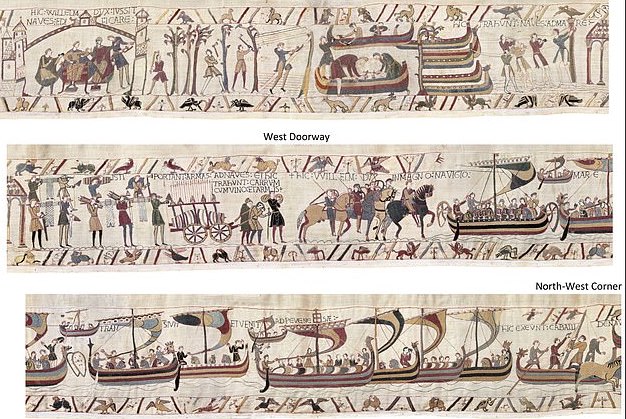The Bayeux Tapestry has revealed a new secret – that it was originally designed to fit on three sides of a cathedral wall in France.
Christopher Norton, professor at the University of York, recently did a deep dive into the history and physical construction of the famous Bayeux Tapestry to determine where the tapestry was intended to hang. Using data taken from the linen strips of the fabric itself and agricultural historical record, Norton discovered that the tapestry was meant to be displayed after its immediate construction in the nave of the Bayeux Cathedral in Normandy, France, tucked between the cathedral’s west wall and choir screen.
Norton says that this explanation on the tapestry’s original display location was always the easiest one, but that it can now by supported by his research.
“It has always been the case that the simplest explanation is that it was designed for Bayeux Cathedral. This general proposition can now be corroborated by the specific evidence that the physical and narrative structure of the tapestry are perfectly adapted to fit the (liturgical) nave of the 11th-century cathedral,” Norton said in a statement accompanying the study.
The tapestry, which is 230 feet long and depicts some of the most significant moments and figures in English history prior to the Norman invasion, was previously thought to have been installed in the Bayeux Cathedral around the 15th century. Norton’s work, however, suggests the tapestry was intended to be displayed there roughly 400 years earlier in the 11th century, when it was woven.
These revelations also suggest the original designer of the Bayeux Tapestry must have had firsthand knowledge of the cathedral and would have specifically shaped the tapestry to fit the cathedral’s dimensions and layout of the nave.








